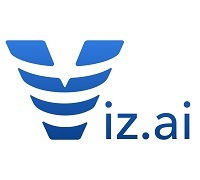 Viz.ai recently announced new data supporting advancements in neurovascular care, with two studies—both presented at the 2025 International Stroke Conference (ISC; 5–7 February, Los Angeles, USA)—showing positive outcomes and the real-world impact of its stroke solutions in clinical practice for patients with acute large vessel occlusion (LVO) strokes.
Viz.ai recently announced new data supporting advancements in neurovascular care, with two studies—both presented at the 2025 International Stroke Conference (ISC; 5–7 February, Los Angeles, USA)—showing positive outcomes and the real-world impact of its stroke solutions in clinical practice for patients with acute large vessel occlusion (LVO) strokes.
The first of these two studies examined the economic benefits of artificial intelligence (AI)-based stroke care coordination platforms for hospitals and patients.
The study projects a significant financial benefit for primary stroke centres (PSCs) by retaining patients who would have been unnecessarily transferred, with calculations suggesting that—if 15% of stroke care was delivered at PSCs in rural/small town areas and an additional 15% took place in micropolitan areas—there would be a reimbursement shift of approximately US$36.7 million to PSCs. In addition, Viz.ai reports that the study showed a 44.13% reduction in time from patient arrival to LVO diagnosis and first contact with the treating endovascular surgeon. These improvements in stroke workflows and treatment times led to reduced lengths of stay in the hospital, according to the company.
“For hospitals, patients, families, and the care team, ideal stroke care involves identifying the patient’s medical needs quickly and transferring the patient only when a higher level of care is deemed necessary to ensure the best outcome,” said Thomas Devlin (CHI Memorial, Chattanooga, USA), co-author of the study. “This study showed that ensuring patients are in the right place for stroke care not only improves outcomes but also reduces futile transfers, and provides financial benefits.”
The second study, titled, ‘Treatment time metrics following implementation of the Viz.ai artificial intelligence intracranial occlusion-detection and communication platform: a multicentre retrospective analysis’, evaluated the impact of Viz LVO on treatment times. Viz.ai claims that it is the second multicentre study to reinforce results demonstrated in previous single-centre studies with fewer patients.
In the study, which included 474 patients (215 post-Viz [45.4%]), Viz LVO implementation significantly reduced treatment time by an average of 31 minutes.
“Every one-minute delay to endovascular therapy has been associated with four additional days of disability-adjusted life years,” said James Siegler (University of Chicago, Chicago, USA). “The use of image-sharing, artificial intelligence-supported communication platforms has the potential to significantly impact treatment times and functional outcomes in stroke patients.”
“Stroke is a leading cause of death and disability in the USA, and rapid treatment is crucial for better outcomes,” added Molly Madziva Taitt, vice president of global clinical affairs at Viz.ai. “With these studies, we further validate the accuracy and effectiveness of our solutions in the clinical setting, including data on economic impact. This reinforces our commitment to advancing patient care coordination and empowering clinicians with the digital tools they need to make faster, more informed decisions.”










